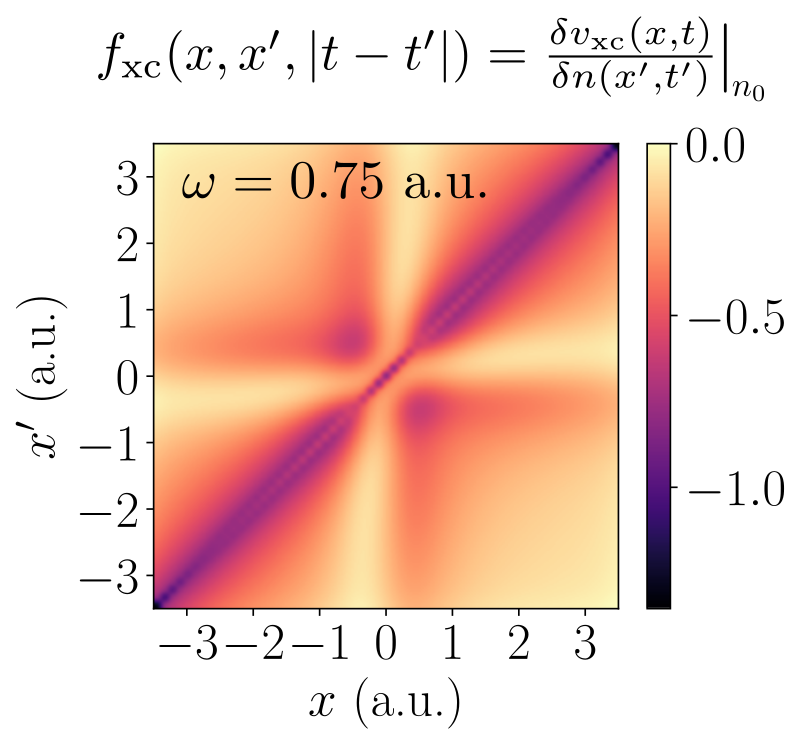Research Highlights
The exact exchange-correlation kernel
Calculations of the exact exchange-correlation kernel within linear response time-dependent density functional theory (TDDFT) elucidates features of practical and theoretical interest.

The density-density linear response function of a many-body quantum system can be used to extract a great deal of excited-state information about the system, for example, its optical spectrum when subject to incident light. The ground-state density of a non-interacting Kohn-Sham system, despite being equal to the ground-state density of a given interacting system by definition, responds differently at linear order to perturbations in the external potential. The exact exchange-correlation (xc) kernel (right) within linear response TDDFT provides the Kohn-Sham system with the correct response properties, meaning the xc kernel is elusive in similar fashion to the xc potential and can exhibit pathological behaviour that is difficult to capture within common approximations. This work demonstrates the exact xc kernel for three canonical one-dimensional systems and examines the full extent of its temporal and spatial structure in the context of the optical spectrum.
There exist potential perturbations oscillating with a certain frequency that produce no change in the density at linear order - the linear response v-representability problem. The xc kernel is singular at these frequencies, and it is shown that the analytic structure of the xc kernel along the real frequency axis is critical in order to reproduce the optical spectrum beyond the lowest energy excitations. Furthermore, the intricate non-local spatial structure of the xc kernel, i.e. the response of the xc potential in a region due to a far away perturbation in the density, is required to obtain low energy optical transitions. This spatial structure is neglected entirely in approximations such as the local density approximation, which is shown to differ by more than a gauge transformation from the exact xc kernel. Exchange-correlation kernels that are obtained in the context of many-body perturbation theory show promise with regard to the features discussed in this work.
Insights from Exact Exchange-Correlation Kernels N. Woods, M. T. Entwistle, R. W. Godby Phys. Rev. B. 103, 125155 (2021)